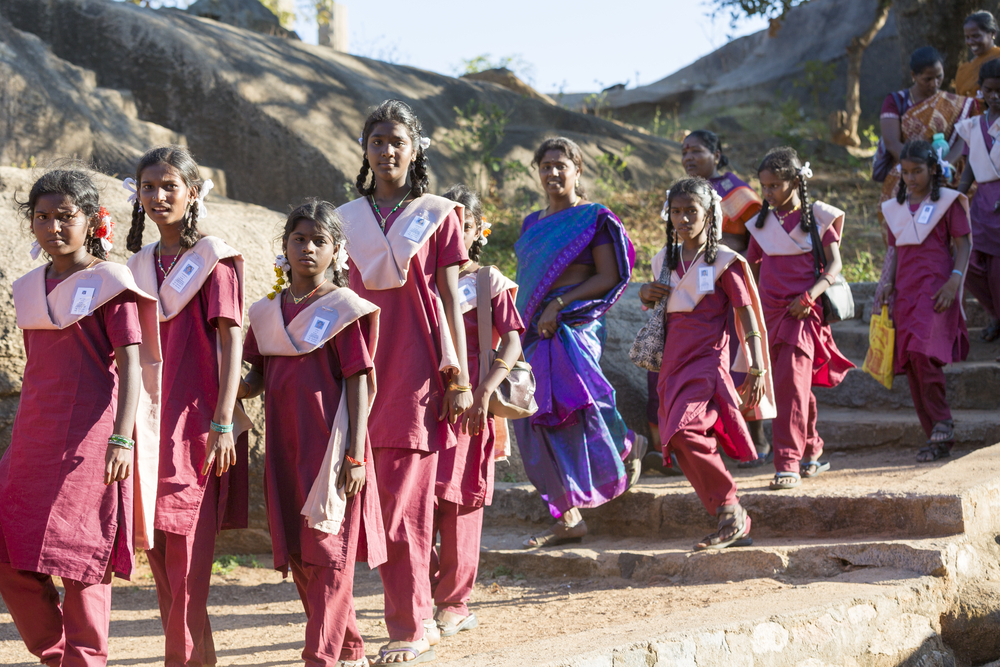Upskilling & Re-skilling Are Required To Bring Dropouts Back To School
There is a need to focus more on setting up smart classes in all higher education institutions

The Union Budget 2021 provided a 6.13 per cent lower allocation as compared to Budget 2020 of Rs 93,224.31 crore allocation to the Ministry of Education. The overall allowance for school education stood at Rs 54,873.66 crore, while for higher education at Rs 38,350.65 crore.
The Budget, in a post-pandemic scenario, was expected to duly respond to the much-needed measures in bringing marginalised children into the fold of remote learning, and would largely focus on the required infrastructural facilities. As per National Education Policy’s (NEP’s) 2020 proposal to boost a fund for gender inclusion, the budget for the national scheme for incentive to girls for secondary education has been slashed by Rs 100 crore.
It is essential to ensure the safety measures before students return to school. The teachers must be trained to secure the emotional well-being of the children and provide them nutritious in-school mid-day meals.
However, in Budget 2021-22 two major flagship schemes — Samagra Shiksha Abhiyan (SMSA, pre-primary to higher secondary schooling) and the critical free Mid-Day Meal (MDM) for all children in government pre-primaries and primaries — have been slashed. The 2021-22 budget for SMSA is Rs 31,050 crore — a decline by 20 per cent from the budget estimates of 2020-21, and the allocation for MDM has been reduced to Rs 11,500 crore in 2021-22 from the revised estimate of Rs 12,900 crore in 2020-21.
Perhaps, additional resources like a solid infrastructure, a secure and hygienic environment, a teacher-student bond towards effective learning ( e.g conducting surveys), would have brought the drop-outs back to school. Moreover, while money may not ensure quality education, lack of adequate resources will only deepen the social divide between people.
For a while now, elementary education in India ails from a plethora of problems despite the best efforts undertaken at various levels by the government all these years. Issues about lack of infrastructure, insufficiently trained teachers, high teacher absenteeism, and low teacher accountability and motivation need to be addressed suitably. Similarly, unequal access to devices and the internet risks exacerbating unequal learning outcomes. Also, considering that blended learning of education will be the new normal format, there is a need to rapidly upskill teachers and provide resources such as smartphones with updated educational software for remote learning. The focus in the education domain should be on equitable access to education even for those belonging to the vulnerable and marginalised sections of society.
There is a need to focus more on improving digital infrastructure, setting up smart classes in all higher education institutions (HEIs) and not just in premier technical institutes.
Similarly, slashing allocation for education will adversely impact programmes like Right to Education (RTE), Act 2009.
As per United Nations Development Programme (UNDP) estimates, the total financial requirement for India to reach the Sustainable Development Goal ( SDG) 4 by 2030 averages $173 billion per year, far exceeding the current government budget of $76.4 billion a year for education. Government schools spend about Rs 24,000-30,000 per child per annum, while in private schools, 91 per cent of students pay lower than Rs 24,000 per annum. In contrast, the average per student expenditure in the United States is about $13,000 per annum.
In this connection, it’s pertinent to note that allocation of at least 6 per cent of GDP (Centre plus states combined) for public education has been recommended in every education policy document, including National Education Policy (NEP) 2020. Despite this, the Centre’s allocation for education in Budget 2021-22 is equivalent to a mere 0.42 per cent of GDP. However, the Centre seems to have shifted responsibility for education financing to state governments. On the other hand, state governments are also experiencing huge revenue loss in the aftermath of the pandemic; it is quite unlikely they will be able to step up investment in public education that stresses on the prime importance of early years education.
Education should be seen as infrastructure – as it essentially involves building the human resources for the nation. Re-skilling or up-skilling of teachers remains the need of the hour.
The author is Member of Advisory Council, Association of Indian Schools
DISCLAIMER: Views expressed are the author's own. Outlook Money does not necessarily subscribe to them. Outlook Money shall not be responsible for any damage caused to any person/organisation directly or indirectly.









